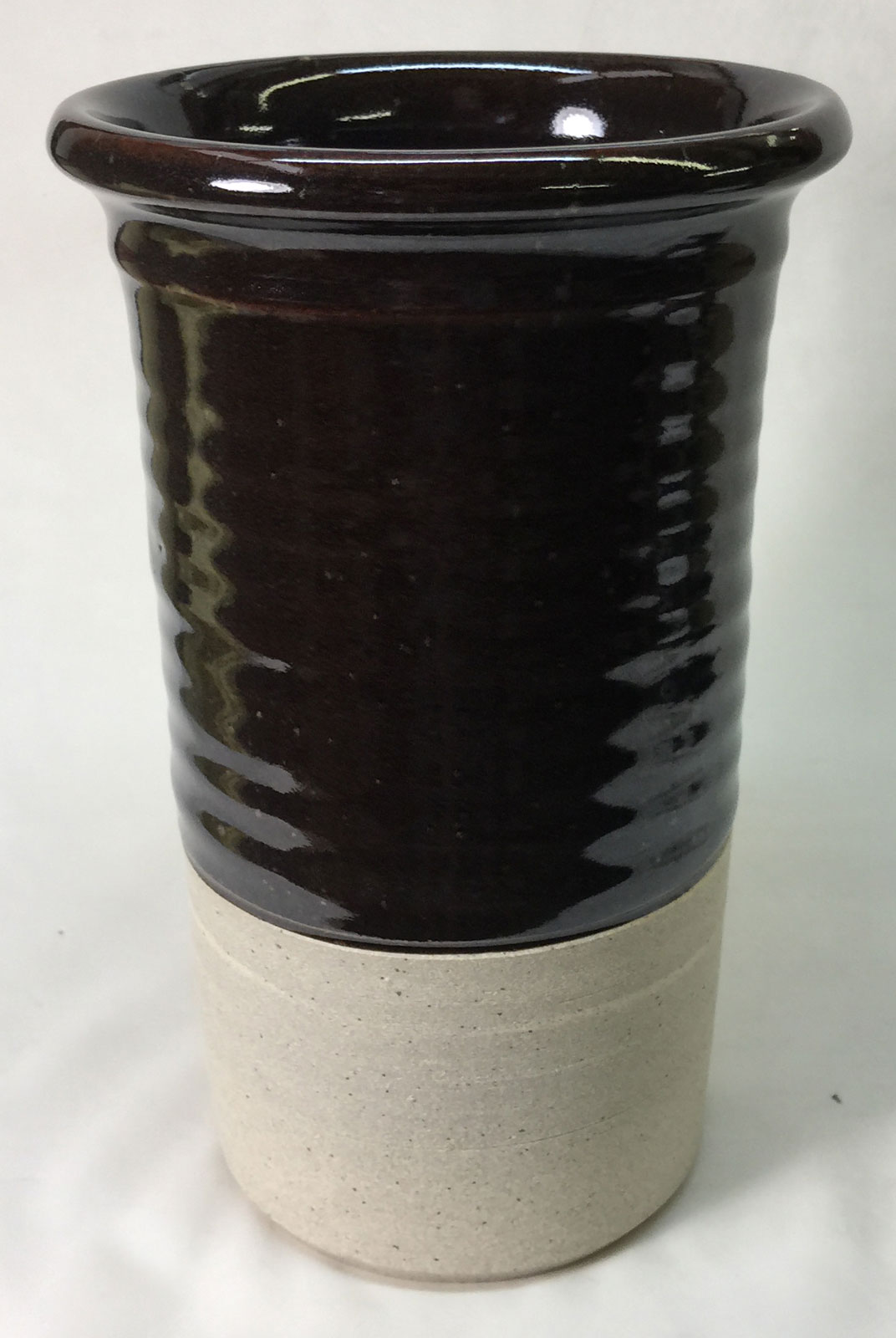Home
Glazes, Engobes
GA10-A Alberta Slip as-a-glaze - Cone 10R
Description
Mixed all-by-itself as a glaze, Alberta Slip fires like a tenmoku at cone 10R. We document procedures to mix this as a brushing glaze, dipping glaze or base coat dipping glaze.
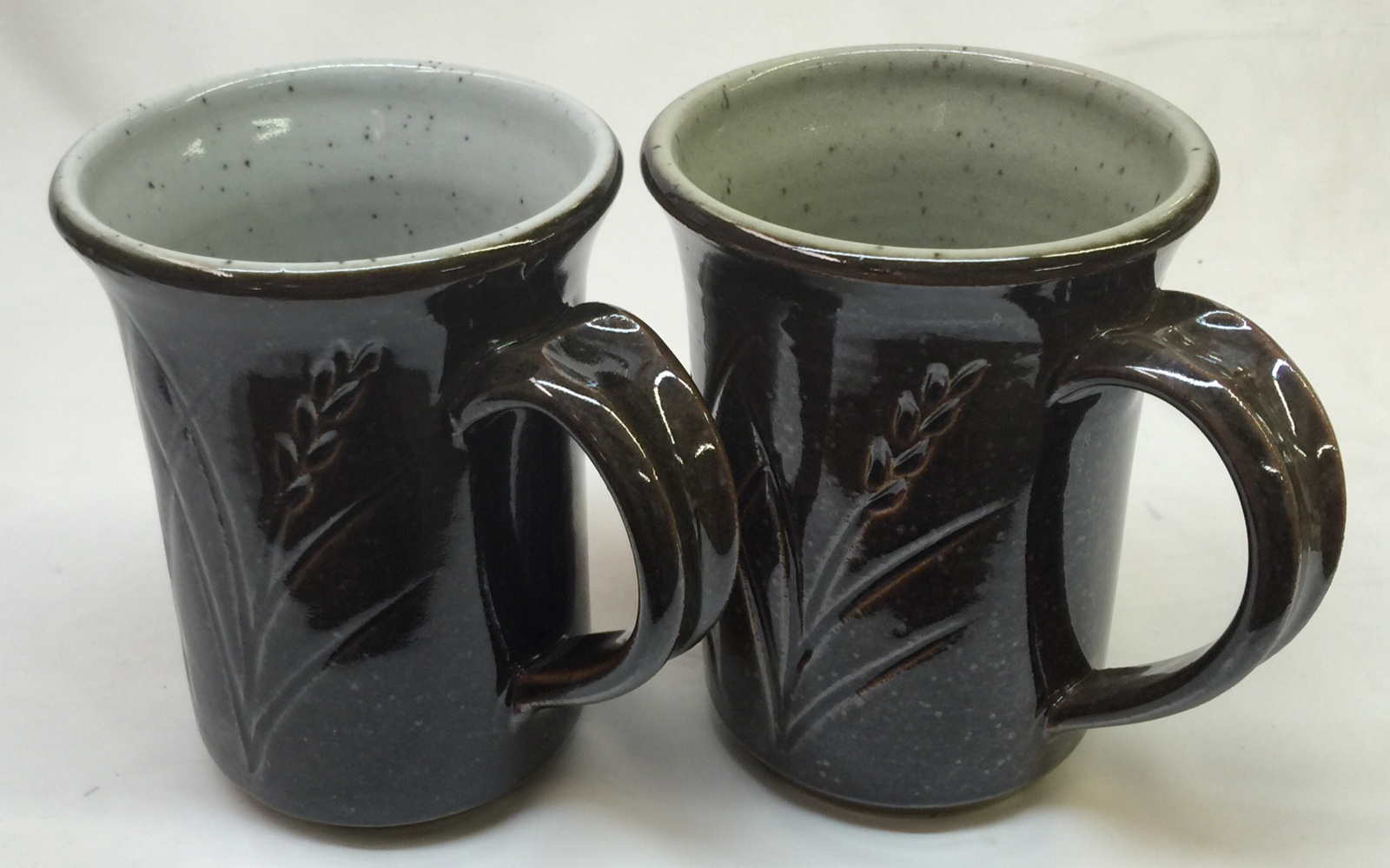
Plainsman H450 (buff stoneware) mugs fired at cone 10R with pure Alberta Slip on the outsides, G1947U transparent (left) and pure Ravenscrag Slip liner glaze. By Tony Hansen.
Process Properties
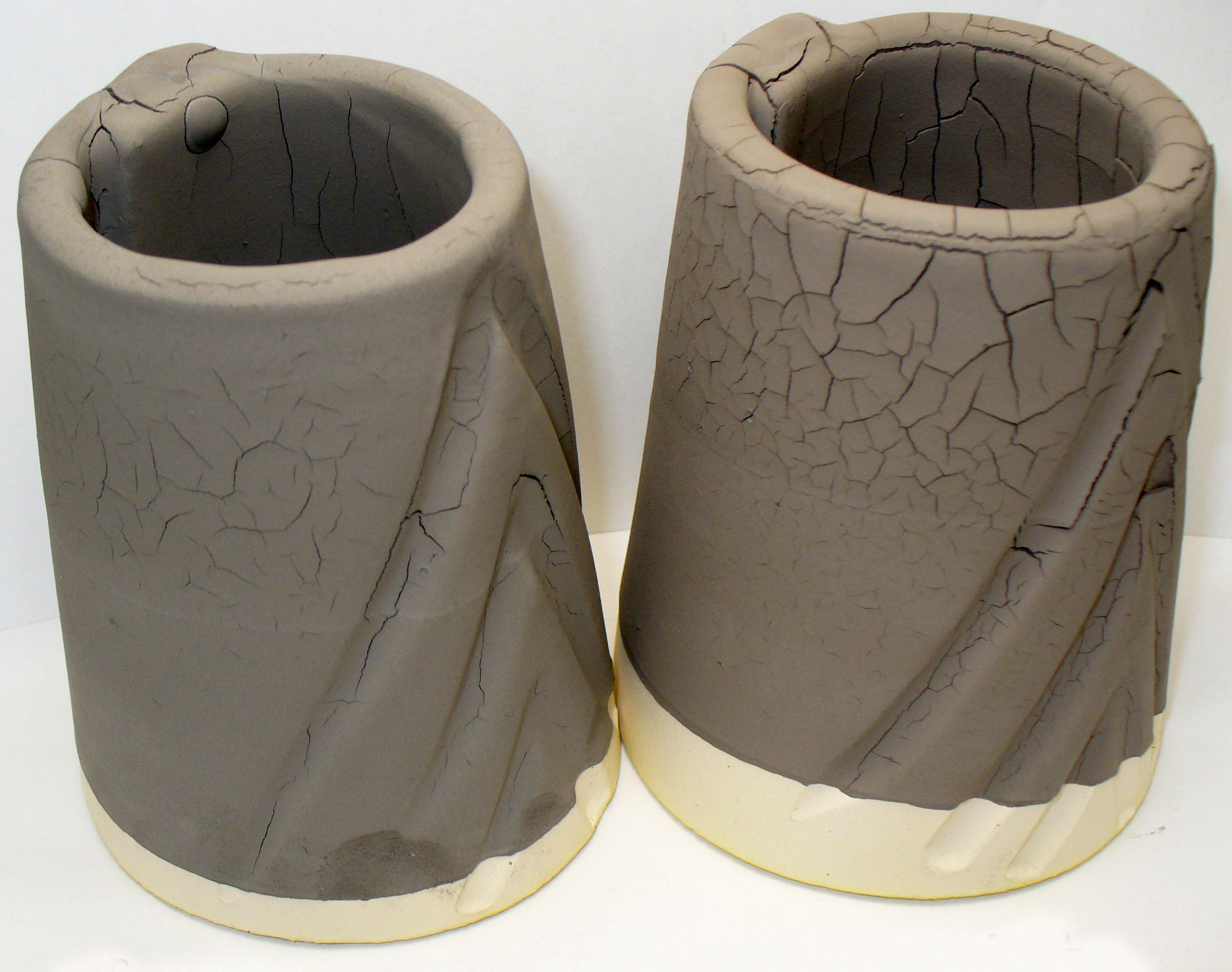
Alberta Slip is a clay, if used raw in high percentages or applied thickly will crack during drying. Roasting is needed.
Glazing
When mixed with water to create a thixotropic slurry, this will perform was as a dipping glaze. It will apply evenly to bisque, produce minimal dripping and dry within seconds. It will be adequately durable for handling.
If you are glaze layering (using this as a dipping glaze and painting a commercial gummed brushing glaze over it) there is a risk of crawling. It may be necessary to add some gum to this, converting it from a dipping glaze to a base-coat dipping glaze.
Recipe
The recipe is 50% raw Alberta Slip and 50% Roast Alberta Slip (see below for info about roasting). More information about this recipe can be found at digitalfire.com, click the following: GA10-A. See also the Alberta Slip page.
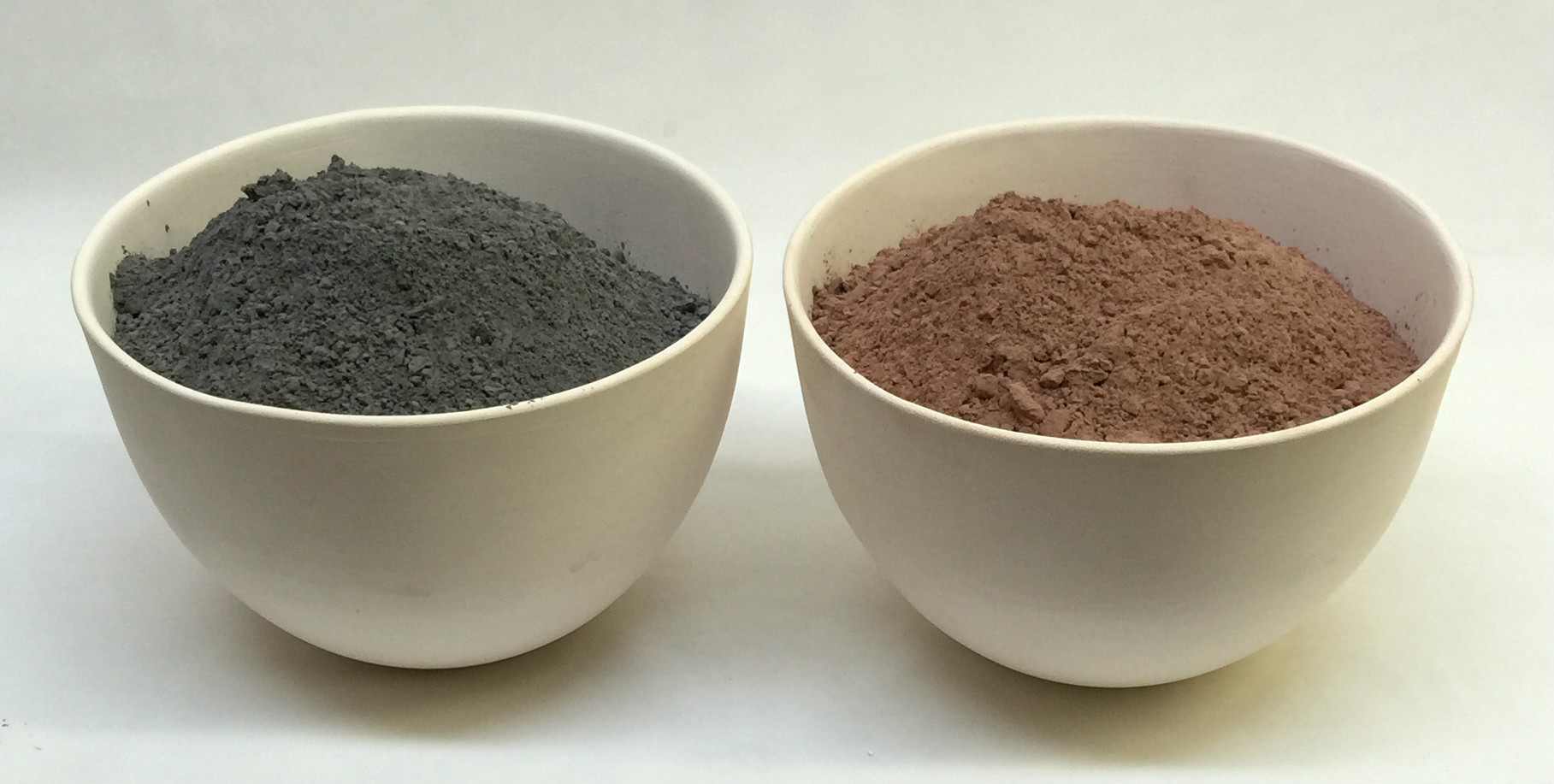
Left: Raw Alberta Slip powder. Right: Roasted at 1080F. This is a plastic clay, thus it has a significant drying shrinkage. Where a glaze is applied thickly or the percentage of Alberta Slip is high, shrinkage cracks (which produce crawling during firing) will occur. We recommend a mix of roast and raw material in recipes. Roasting the Alberta Slip powder at 1000F greatly reduces the shrinkage. Use a firing rate and hold-time-at-1000F appropriate for the wall thickness and size of your bisque vessels (e.g. 500F/hr and 30 minutes for thin walled small vessels, slower and longer hold for large ones). If any of the powder within is black, increase hold time. Adjust proportions as needed (more roast if the glaze cracks on drying or more raw if it is drying too powdery or not bonding well).
The roasted material has a weight-loss of about 3% on firing (vs. 9% for the raw powder). This difference can be ignored in most cases. But, to be more precise, use 3% less of the roasted powder (multiply the amount by 0.97). For example, suppose you need 1000 grams of a 50:50 raw:cacline Alberta Slip mix for a glaze recipe. Use 500 raw and 500*.97=485 roast.
Gallery
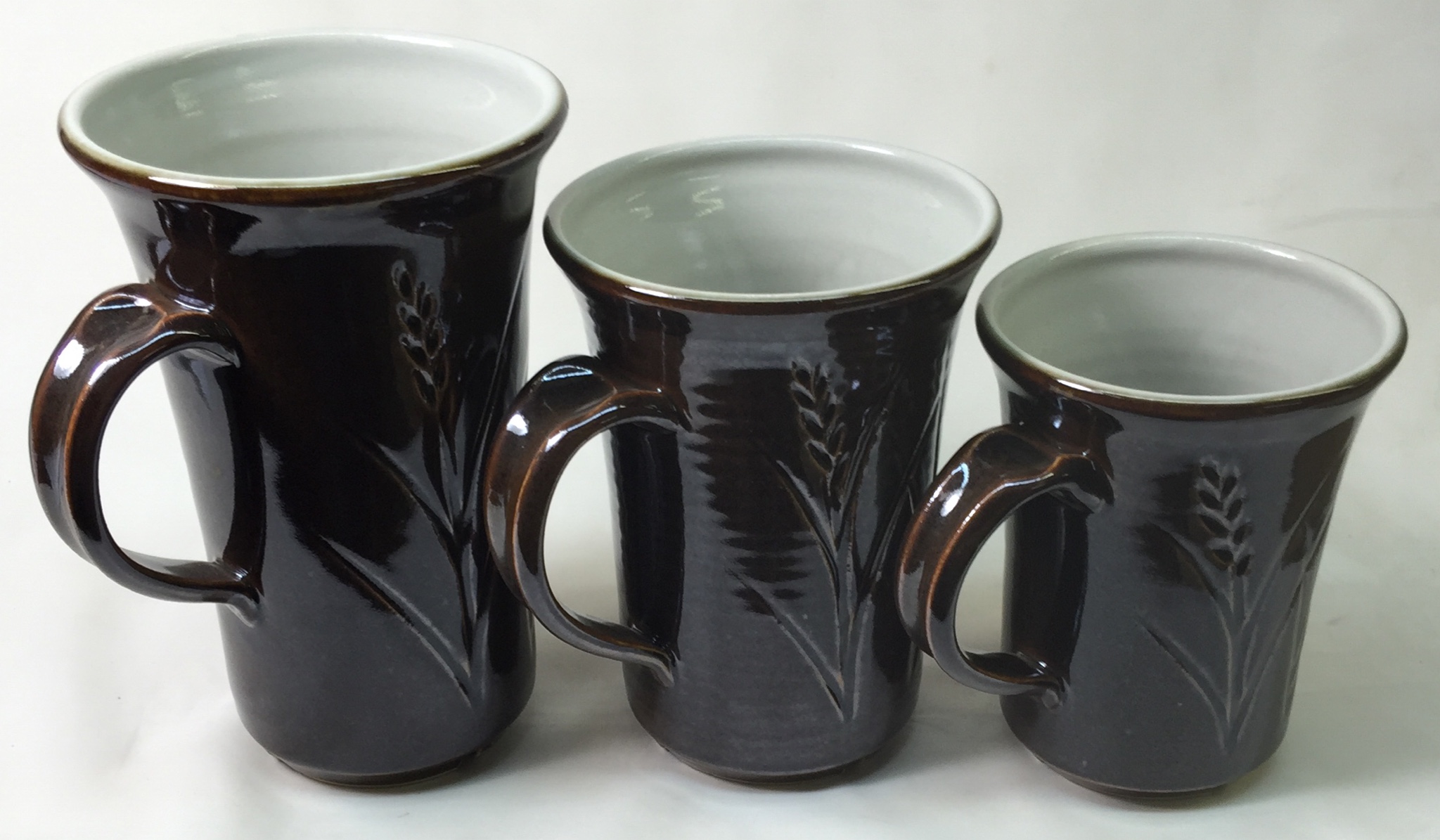
Porcelain mugs fired at cone 10R. Pure Alberta Slip as-a-glaze outside. The liner glaze is G1947U (employing Grolleg Kaolin for the left two mugs) and EPK for the other.
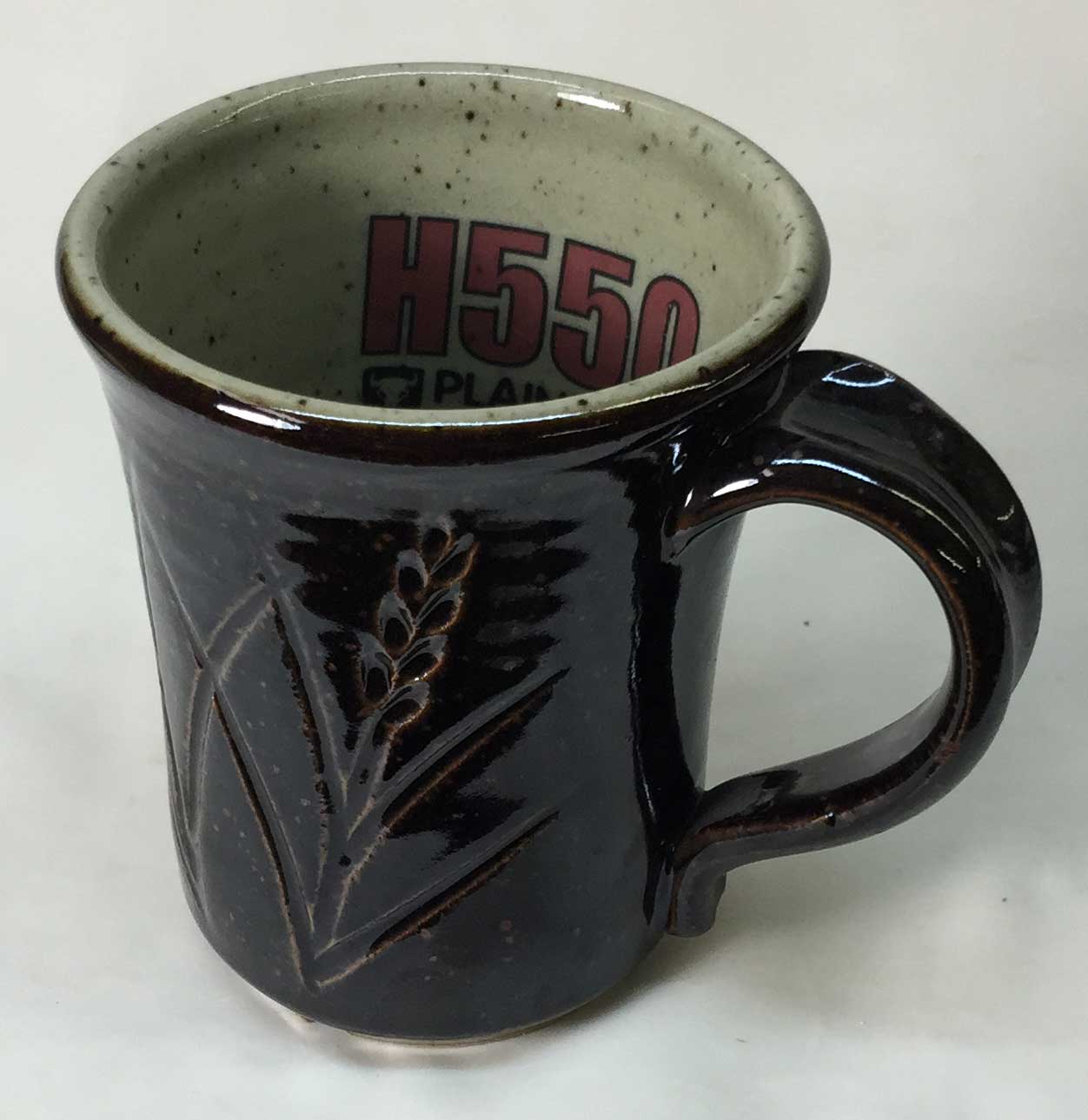
Plainsman H550 mug fired at cone 10R. The liner glaze is G1947U transparent. Outside is 50:50 roast:raw Alberta Slip mix. Mug has been fired to 1500F in a decal firing, this has darkened the Alberta Slip tenmoku effect (to almost black).
